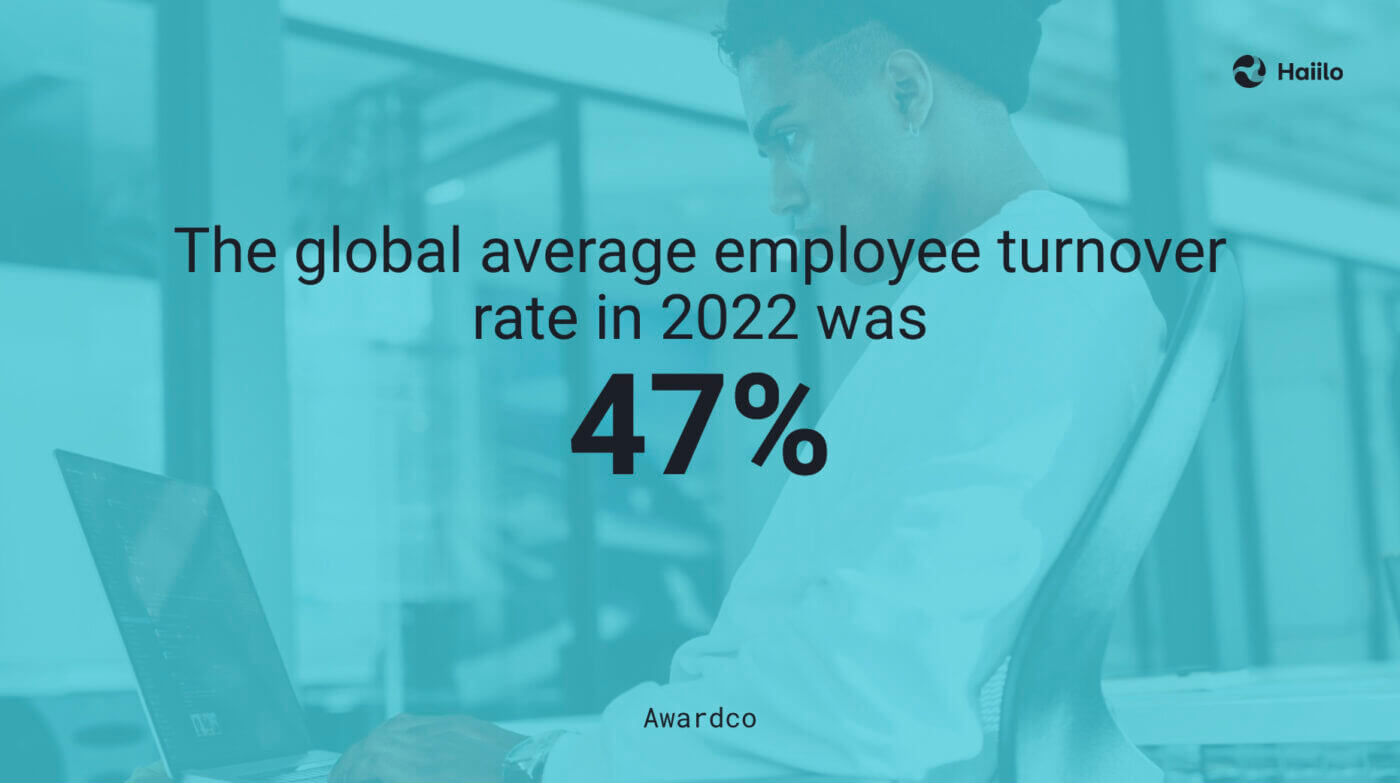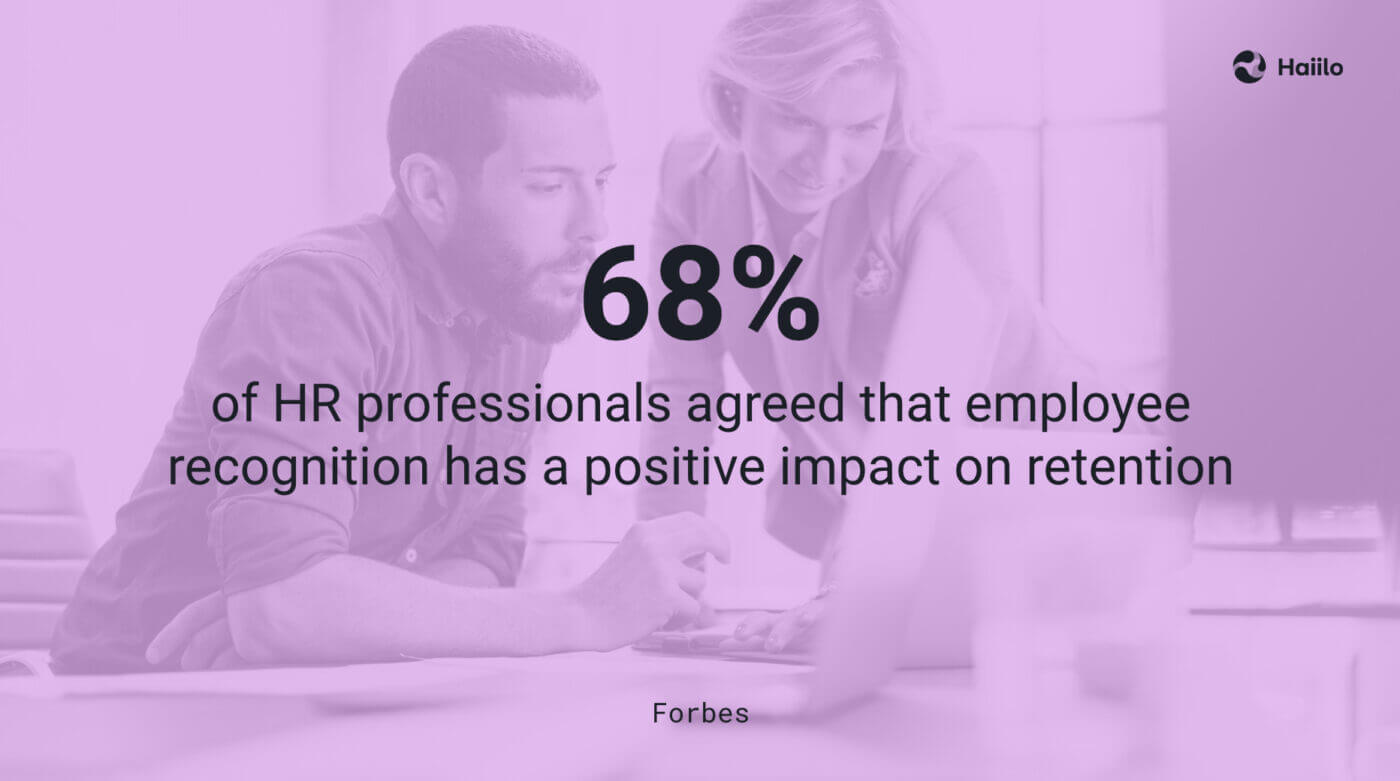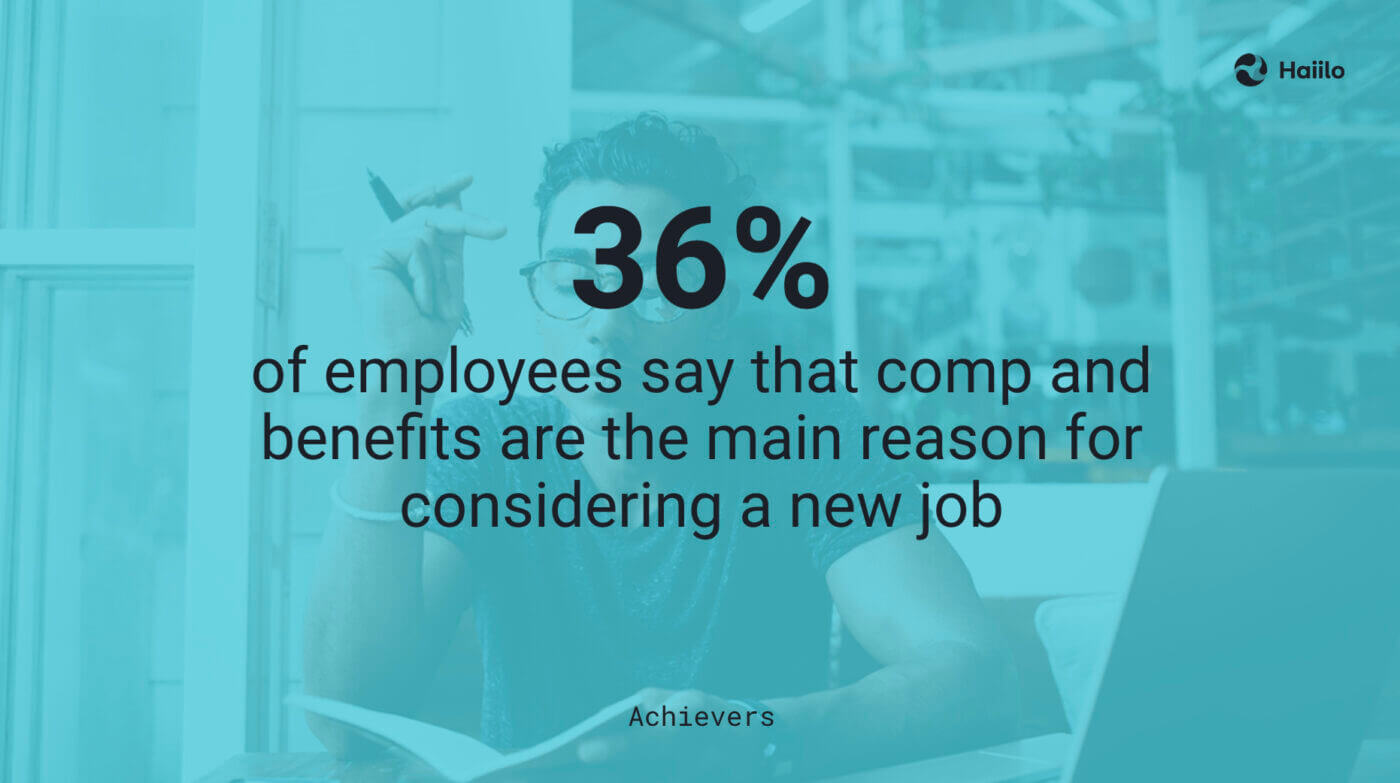Can companies prevent high employee turnover rates? What is considered a high employee turnover anyway? And how does excessive turnover impact the overall business success?
Keep reading because we are bringing all the answers to this blog!
Since the start of the great resignation era, more and more organizations have started implementing new workplace activities and initiatives to stop their people from leaving.
Some have been successful, some not so much. But the good news is that what people want hasn’t changed drastically in the past decade (besides wanting more flexibility).
So let’s take a look into what people expect from their employers and how to manage high turnover rates in your organization.
What Is Considered a High Employee Turnover?
Before we start into this section, it’s important to understand the definition and formula for employee turnover rate.
To calculate the turnover rate, divide the number of terminates during a specific period by the number of employees at the beginning of that period. If we start the year with 200 employees, and during the year, 10 people terminate their contract, turnover is 10/200 = 0.05, or 5%
Employee turnover rates vary significantly across industries, locations, and cultures, and depend on the current market situations.
For example, according to research, voluntary employee turnover has doubled between 2011 and 2021, the pandemic period causing the biggest jump.
However, if we take the average of all the industries, some calculations show that the global average employee turnover rate in 2022 was 47%. That’s extremely high, and every company should strive for better!

Here is the breakdown by industry:
- Construction: 53%
- Manufacturing: 39%
- Trade, Transportation, and Utilities: 54%
- Information: 37%
- Financial activities: 29%
- Professional and Business services: 63%
- Education and Health services: 38%
- Leisure and Hospitality: 82%
- Government: 20%
We suggest that companies don’t take these high employee turnover rates as benchmark goals. In general, every company should always strive to have their turnover rates never exceeding 30%, if not lower.
Stop your employees from leaving with Haiilo communications platform!
7 Reasons for High Employee Turnover (and how to prevent it)
The reasons for high employee turnover can be numerous. However, it always comes to delivering a poor employee experience in the workplace. Since many different factors can shape positive or negative experiences at work, let’s take a look at the ones that highly impact turnover.
1. Loneliness and lack of sense of belongingness
When employees feel connected with their peers, they are less likely to look for other work opportunities. Unfortunately, many employees today feel disconnected from their coworkers and their company’s culture.
Achiever’s research shows that 42% of employees think their company’s culture has diminished since the onset of the pandemic. Most employees place the blame on a lack of communication (26%) or a lack of effort to make remote employees feel connected (25%).
Consequently, employees feel more lonely than ever, and lonely employees are 2 times more likely to quit.
This is particularly concerning for organizations with dispersed workforces where some employees never meet each other in person.
For such organizations, it’s critical that they use appropriate technologies to encourage and drive social interactions among employees. For most companies that means the implementation of modern social intranets and employee experience platforms.
2. Lack of feedback and recognition
Lack of meaningful feedback and recognition often leads to quiet quitting behaviors of low employee retention rates.
According to an Indeed survey, 30% of people who left a job within the first six months said being recognized more for their unique contributions could have helped them stay longer. Furthermore, SHRM/Globoforce survey, 68% of HR professionals agreed that employee recognition has a positive impact on retention.

Most organizations have yet to improve their recognition and feedback initiatives. Many are stuck with annual or semiannual feedback sessions where employees wait for months to get feedback.
Instead, feedback and recognition should be continuous, frequent, on-the-spot, and meaningful. Creating a formal employee recognition program is a good idea because it motivates employees to participate more.
3. Internal communications and organizational alignment
Many employees leave their organizations because of a lack of understanding of what their company stands for. Organizational alignment is critical for driving employee morale and engagement, and it is important for shaping positive workplace experiences.
One study found that communication significantly impacts both work engagement and organizational commitment. Another study found that internal communication enhances the extent to which employees identify with the organization, which is one of the main factors impacting employee retention. Furthermore, according to a report, “effective team communication increases employee retention by 4.5 times, compared to businesses that lack effective communication in the workplace.”
So IC departments need to build an open and transparent company culture that motivates and engages employees and helps people identify with their employers.
📹 To help your digital workplace communicate better, you need a proper internal communications technology and strategy in place. Watch our Masterclass to learn about how to implement a successful IC strategy.
4. Poor relationships with managers
Many of you already know that managers account for the biggest variance in employee engagement in the workplace. Similarly, they have a huge impact on employee turnover.
Employee-manager relationships are something that employees deal with on a daily basis, and this relationship plays a critical role in shaping a positive employee experience.
Transformational and servant leadership are considered the two most efficient leadership styles. They are both active listeners who show empathy and know how to lead by example.
So organizations need to invest more in manager training and enable managers to regularly measure the pulse of their people and make timely decisions for change and improvement. Using simple employee surveys can go a long way in helping managers understand the needs and wants of their people and, hence, prevent high employee turnover rates.
5. Lack of career development paths
According to the Work Institute’s Retention Report, the number one reason for employees’ premature departure was ‘career issues’ with their current employer. In other words, 1 in 5 employees leave their organizations because of the lack of growth opportunities.

To eliminate this cause of high employee turnover, employers should consider creating clear career paths for all of their departments. Workers should have an understanding of what it takes to get to a higher level and grow their careers.
Furthermore, every company should offer opportunities for internal mobility and career switch programs. When successful employees express the need or desire to change their career paths, employers should do their best to accommodate them in other departments.
6. Flexibility, work-life balance, and wellbeing
Even though many professionals expected things to get back to normal with the end of the COVID-19 pandemic, the opposite happened. The great resignation era followed and forced many employers to consider keeping flexible work arrangements in their workplaces.
Research by the Boston Consulting Group (BCG) indicates that up to 75% of digital workers are looking to change jobs within two to three years. One of the primary reasons employees change jobs is the absence of flexibility in their working patterns. A Microsoft study found that more than two-thirds of employees wanted flexible working arrangements for them to stay.
Hence remote and hybrid work as well as flexible working hours are here to stay, and they are now one of the main drivers for better employee retention.
Some experts are still convinced that fully remote working negatively impacts business success and productivity. However, there are numerous examples of very successful companies that have adopted and adapted to the new ways of working.
7. Compensation and benefits
Even though last on our list, comp, and benefits play a critical role in retaining talent in your organization.
To be more precise, according to research, 36% of employees say that comp and benefits are the main reason for considering a new job.

So one of the ways to prevent high employee turnover rates is by putting together fair and attractive compensation and benefits packages.
Employers should do extensive research on industry benchmarks to understand what are the desired packages in their market for various job positions. Additionally, they can do regular surveys and 1 on 1 conversations to understand their employees’ current state of mind and their salary expectations.
How Haiilo Can Help You Prevent High Employee Turnover
Modern organizations understand that the role of technology in motivating, engaging, and retaining talent in any organization is critical.
Moreover, those who have been neglecting workplace tech are seeing a negative impact on the entire organization including company culture, employee productivity, resilience business continuity, and others.
According to a study by Ultimate Software, 92% of workers said having technology that makes their jobs easier impacts their happiness with their jobs. Furthermore, employees have a 61% higher intent to stay with their employers if they feel they have the technology that supports them at work.
Modern employee intranets do exactly that – make people, information, documents, and technology available on the spot to better enable people for success. They serve as a single source of truth for everything important that is going on in the organization and make it easy for employees to stay connected with their peers.
Such technology naturally encourages social interactions at work and makes people connected and more engaged. Furthermore, powerful analytics provides access to data, insights, and actionable recommendations for improvement, including decreasing high employee turnover.
Download our Employee Engagement Report and learn what drives and motivates modern employees!









